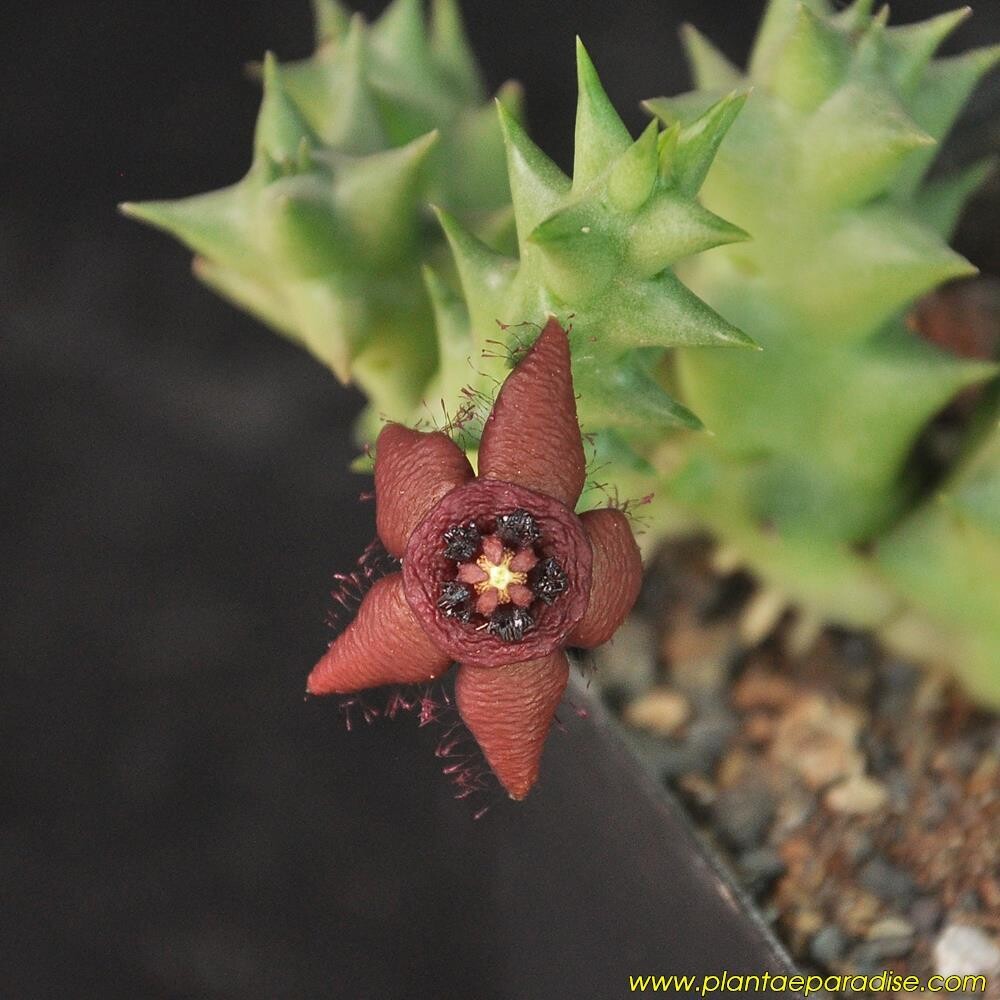Please check the Shipping Updates Page for information on shipping.
Orbea semota subsp. orientalis
Origin of Name
The genus name "Orbea" is a tribute to the 19th-century Italian botanist Orazio Antinori, while "semota" means "remote" or "isolated" in Latin, reflecting the species' often secluded natural habitats. The subspecies designation "orientalis" suggests its geographical orientation, indicating that this particular subspecies is found more towards the eastern regions of its distribution range.
Technical Description of Plant
Orbea semota subsp. orientalis is distinguished by its fleshy, angular stems that form low, spreading mats or clumps. The stems are green to grey-green, adorned with lighter mottling and typically have four angles with tooth-like projections along the edges. Flowers emerge at the base of the stems, showcasing a star-shaped form with deep maroon to almost black colors and a central raised annulus that is often lighter, creating a striking contrast. The blooms emit a strong scent, attracting pollinators such as flies, which play a crucial role in their pollination strategy.
Origin of Plant
This subspecies is indigenous to East Africa, predominantly thriving in Kenya and Tanzania. It occupies arid to semi-arid environments, often growing in rocky outcroppings or among stones, where it can benefit from the minimal soil and moisture that these microhabitats provide.
Conservation Status
Currently, there is limited specific conservation status information for Orbea semota subsp. orientalis. However, like many specialized flora, it faces threats from habitat destruction and the illegal plant trade. Conservation efforts are essential to preserve its natural habitats and ensure its survival for future generations.
Care Instructions
Orbea semota subsp. orientalis is relatively easy to care for, making it suitable for both novice and experienced succulent enthusiasts. It thrives in well-draining soil with minimal water, requiring watering only when the soil has completely dried out. Overwatering can lead to root rot, so err on the side of underwatering. It prefers full sun to partial shade, with brighter light intensifying the stem colors and promoting flowering. During winter, reduce watering significantly and protect it from frost, as it is not cold-hardy. Propagation is easily achieved through stem cuttings or seeds.
